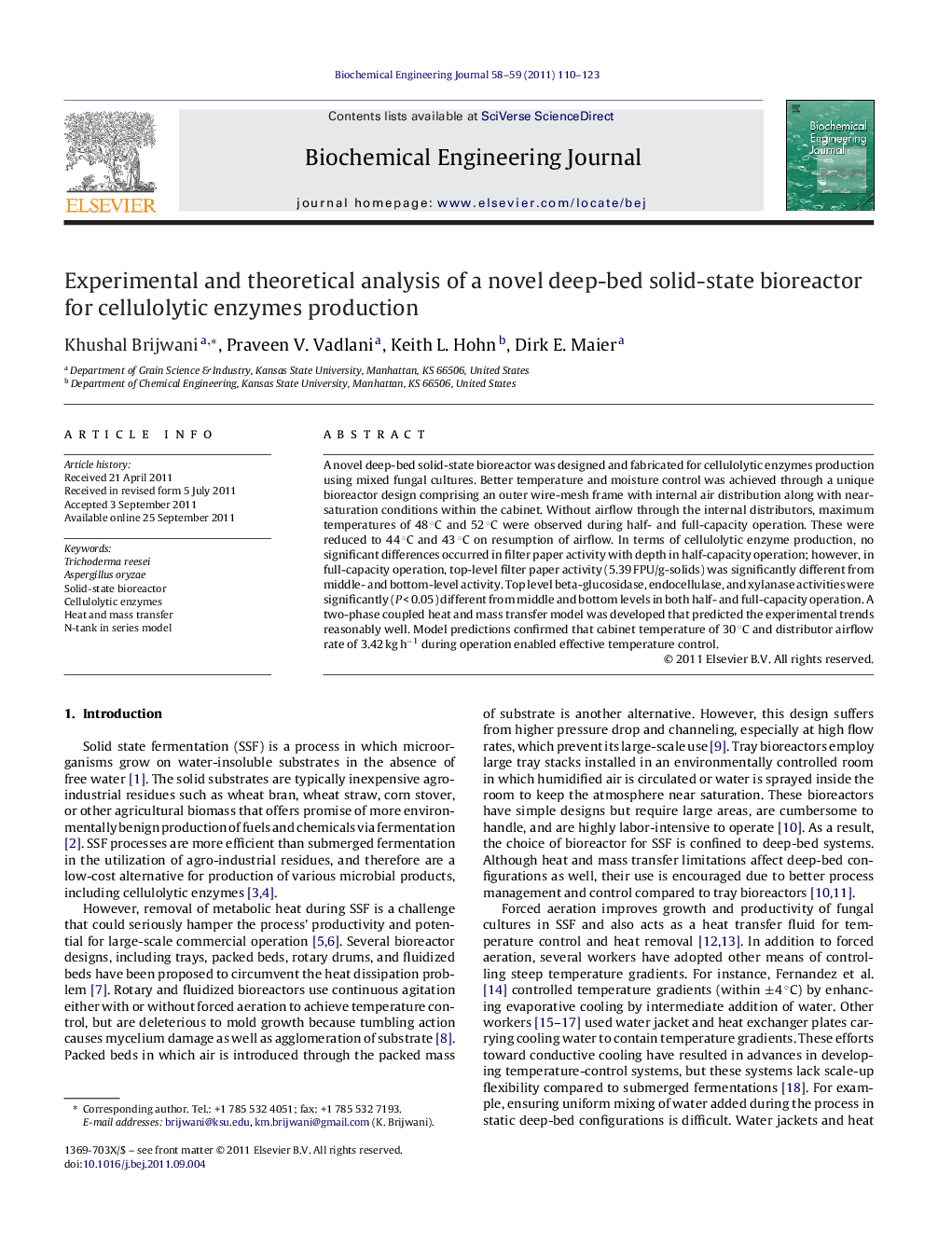| Article ID | Journal | Published Year | Pages | File Type |
|---|---|---|---|---|
| 3692 | Biochemical Engineering Journal | 2011 | 14 Pages |
A novel deep-bed solid-state bioreactor was designed and fabricated for cellulolytic enzymes production using mixed fungal cultures. Better temperature and moisture control was achieved through a unique bioreactor design comprising an outer wire-mesh frame with internal air distribution along with near-saturation conditions within the cabinet. Without airflow through the internal distributors, maximum temperatures of 48 °C and 52 °C were observed during half- and full-capacity operation. These were reduced to 44 °C and 43 °C on resumption of airflow. In terms of cellulolytic enzyme production, no significant differences occurred in filter paper activity with depth in half-capacity operation; however, in full-capacity operation, top-level filter paper activity (5.39 FPU/g-solids) was significantly different from middle- and bottom-level activity. Top level beta-glucosidase, endocellulase, and xylanase activities were significantly (P < 0.05) different from middle and bottom levels in both half- and full-capacity operation. A two-phase coupled heat and mass transfer model was developed that predicted the experimental trends reasonably well. Model predictions confirmed that cabinet temperature of 30 °C and distributor airflow rate of 3.42 kg h−1 during operation enabled effective temperature control.
► A novel deep bed solid-state bioreactor was designed and fabricated. ► Performance of bioreactor was evaluated during cellulolytic enzymes production. ► Two-phase heat and mass transfer model was developed. ► Model showed better agreement with observed experimental data. ► Model explicitly predicted the bioreactor performance in various scenarios.
